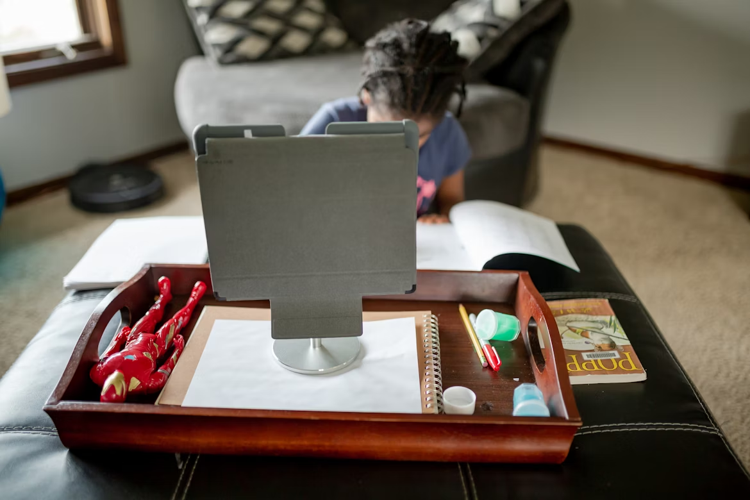Virtual education has undergone steady transformation, guided by a growing reliance on digital tools and platforms. From basic video lessons to immersive online experiences, the evolution reflects how both teaching and learning continue to respond to shifts in technology. These developments have shaped how students access knowledge, interact with instructors, and manage their educational paths. As schools, teachers, and families adjust to new norms, the role of technology in the educational process has become deeply embedded in everyday learning practices.

Access and Flexibility in Online Learning
One of the most noticeable shifts is the way students can now learn beyond the constraints of physical classrooms. Online platforms offer a level of flexibility that allows students to engage with material on their schedules, creating opportunities for self-paced progress. Within this shift toward virtual instruction, Legacy online classes for Georgia families have remained a steady resource, offering structured lessons grounded in familiarity. These programs provide continuity in a space often marked by rapid change, giving families the chance to blend traditional academic goals with modern digital access.
Growth of Interactive Tools and Platforms
Technology has introduced a wide range of tools that have transformed how students and teachers interact in virtual settings. Online education is no longer confined to watching recorded lectures or reading static PDFs. Today’s platforms support live video sessions, real-time chats, collaborative documents, and shared digital whiteboards. These features help create a sense of presence and interaction, allowing students to engage more deeply with both the content and their peers. Through breakout rooms, learners can participate in small group discussions, mirroring in-person classroom dynamics. Teachers can share their screens, annotate documents on the spot, and use polls or quizzes to check understanding instantly, making lessons feel more active and participatory.
Interactive tools also help maintain student interest and involvement, particularly for those who may struggle with attention in less structured environments. Programs like virtual labs allow students to run experiments and explore scientific principles through simulations, offering experiences that would otherwise require a physical classroom or expensive equipment. In subjects like mathematics or language arts, visual aids, gamified platforms, and immediate feedback systems create more engaging learning pathways. Teachers are also able to monitor participation and progress more easily, using dashboard insights to see who is involved and who might need extra support.
Personalized Learning Through Data and AI
The growing role of artificial intelligence and data analytics in education has reshaped the way instruction is delivered and how students interact with learning materials. Rather than relying on a one-size-fits-all approach, many virtual platforms now adapt to each student’s performance in real time. These systems assess how students respond to questions, how long they spend on tasks, and where they make repeated errors. With this information, the platform can modify the content by adjusting difficulty levels, offering hints, or revisiting foundational concepts. This creates a learning path that shifts based on actual needs, making the process more intuitive and efficient.
Teachers also benefit from this personalized system. They gain access to dashboards that show individual progress, pinpoint areas of difficulty, and flag when a student might need extra attention. This kind of insight was once difficult to gather through traditional classroom settings, but is now readily available through built-in analytics. Instead of waiting for test scores or final grades, teachers can respond in the moment, guiding students with targeted interventions that are informed by data rather than guesswork.
Digital Literacy and New Skills Development

As virtual education expands, students must navigate more than just academic content. Learning to use digital tools responsibly and effectively has become part of the curriculum. Students are expected to manage online accounts, collaborate through platforms, and research using trusted digital sources. These skills go beyond schoolwork, preparing students for work and communication in digital spaces. The classroom has grown into a place not only for content knowledge but also for practical technical skills that carry into life beyond school.
Teacher Roles and Professional Development
Technology has expanded the responsibilities of teachers, reshaping both how they prepare and how they deliver instruction in virtual settings. Teaching is no longer confined to standing in front of a classroom and guiding students through textbooks or printed materials. In online education, teachers must design lessons that function across a range of devices, learning platforms, and student schedules. This includes creating or curating digital content, recording instructional videos, setting up interactive activities, and monitoring student progress through digital dashboards. Teachers must also troubleshoot technical issues, respond to questions through messaging apps or emails, and adapt to new software updates and platform changes, often without advance notice.
Professional development for educators has grown to reflect these demands. Training sessions now focus more on learning management systems, digital classroom tools, and methods for maintaining student engagement in online spaces. Teachers explore ways to incorporate multimedia resources into their lessons, develop strategies for facilitating online discussions, and learn to assess student understanding in nontraditional formats. They are also encouraged to explore ways to build strong online relationships with students, many of whom may never meet them in person.
Challenges and Equity in Access
The growth of virtual education has brought with it a range of benefits, but it has also deepened existing divides in access to resources. One of the most persistent challenges is the uneven availability of reliable internet and modern digital devices across different communities. Students in rural areas or underfunded districts often face daily obstacles that interfere with their ability to participate fully in online classes. Slow internet connections, shared devices in large households, and limited technical support can all hinder a student’s ability to complete assignments, attend virtual lessons, or interact with teachers and classmates.
Beyond infrastructure, the home learning environment itself can affect a student’s success. Some students may not have access to a quiet place to study or may be balancing school responsibilities with caregiving or part-time work. These circumstances can lead to increased stress and lower academic performance, regardless of a student’s potential. Students with learning disabilities or language barriers may also find digital platforms less accommodating if tools are not designed with diverse learning needs in mind.
Technology continues to shape virtual education, influencing how students learn, how teachers teach, and how families engage with academic content. From interactive tools to personalized platforms, the changes reflect a shift toward more accessible and dynamic educational experiences. As digital instruction becomes more common, the balance between innovation and inclusion remains central. The progress is visible, but so are the challenges that come with it. With thoughtful planning and continuous adjustment, virtual education will keep evolving, shaped by the tools it uses and the people it serves.





(0) comments
We welcome your comments
Log In
Post a comment as Guest
Keep it Clean. Please avoid obscene, vulgar, lewd, racist or sexually-oriented language.
PLEASE TURN OFF YOUR CAPS LOCK.
Don't Threaten. Threats of harming another person will not be tolerated.
Be Truthful. Don't knowingly lie about anyone or anything.
Be Nice. No racism, sexism or any sort of -ism that is degrading to another person.
Be Proactive. Use the 'Report' link on each comment to let us know of abusive posts.
Share with Us. We'd love to hear eyewitness accounts, the history behind an article.